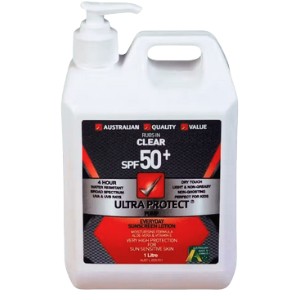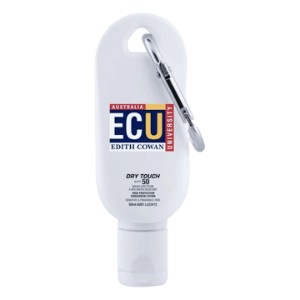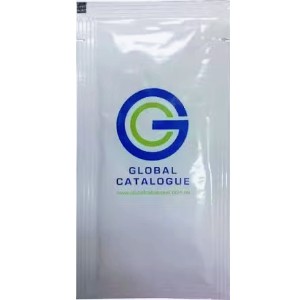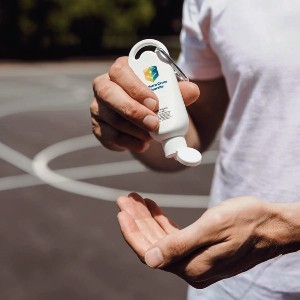Home » Promotional Sunscreens: Tips, Trends & Top Marketing Ideas »
How Sunscreens Shield Our Skin at the Cellular Level
Last Updated: 28th April 2025
Sun protection is not just a summer concern; it’s a vital aspect of daily health care. With the increasing awareness of the sun’s harmful effects, understanding how promotional sunscreens work at the cellular level is crucial for choosing the right protection. This article delves into the mechanics of sunscreens, exploring their interaction with ultraviolet (UV) radiation and the shielding they provide to our skin’s cells.
Understanding UV Radiation
UV radiation comprises UVA and UVB rays, each with distinct impacts on the skin. While UVB rays are primarily responsible for sunburn and play a significant role in the development of skin cancer, UVA rays penetrate deeper into the skin, causing premature ageing and contributing to DNA damage. Both types of UV radiation can alter the skin’s cellular structure, leading to long-term health issues. Understanding this interaction is the first step in appreciating the protective role of sunscreen.
Sunscreen Mechanics: Chemical vs Physical

ultra protect sunscreen
Sunscreens come in two primary forms, chemical and physical, each with a unique method of protecting the skin:
- Chemical Sunscreens: These sunscreens absorb UV radiation, converting it into heat that is then dissipated from the skin. Ingredients like oxybenzone and avobenzone are commonly used in these formulations to provide effective protection against UV rays.
- Physical (Mineral) Sunscreens: Using minerals such as zinc oxide and titanium dioxide, physical sunscreens reflect and scatter UV radiation away from the skin, offering a physical barrier against sun damage.
Both types of sunscreen work to prevent the harmful cellular effects of UV exposure, including DNA damage that can lead to skin cancer.
The Significance of Broad-Spectrum Protection
Broad-spectrum sunscreens are designed to protect against both UVA and UVB rays, ensuring comprehensive skin protection. This dual action is critical for safeguarding the skin’s cellular integrity and maintaining long-term health.
Implementing Effective Sun Protection

sunscreen lotion
Implementing effective sun protection is a multi-faceted approach that goes beyond simply selecting and applying sunscreen. Here’s a more detailed look at what it entails:
- Choosing the right SPF: The Sun Protection Factor (SPF) is a measure of how well a sunscreen will protect skin from UVB rays, the kind of radiation that causes sunburn and contributes to skin cancer. For everyday use, an SPF of at least 15 is recommended, but for extended outdoor activity, especially in summer or in high-UV environments, an SPF of 30 or higher is preferable.
- Proper Application: Sunscreen should be applied to all exposed skin, including often-missed areas like the ears, back of the neck, and tops of feet. Use a liberal amount; most adults need about one ounce (the size of a shot glass) to fully cover their body. Apply sunscreen 15 to 30 minutes before going outdoors to ensure it has time to absorb and begin working.
- Reapplication: Sunscreen’s effectiveness diminishes over time, especially after sweating, swimming, or towel drying. Reapply at least every two hours, and more frequently if you’re getting wet or sweating heavily.
- Broad-Spectrum Protection: Choose a sunscreen that offers broad-spectrum protection, which blocks both UVA and UVB rays. UVA rays penetrate deeper into the skin and are responsible for premature ageing and some types of skin cancer, while UVB rays cause sunburn and play a key role in the development of skin cancer.
- Additional Measures: Sunscreen is just one part of sun protection. Wear protective clothing, such as long-sleeved shirts, pants, and wide-brimmed hats, especially during the middle of the day when the sun is at its strongest. Seek shade whenever possible, particularly between 10 a.m. and 4 p.m. when UV radiation is highest.
- Eye Protection: Don’t forget about protecting your eyes, which can also be damaged by UV radiation. Sunglasses with 100% UVA and UVB protection will help to shield your eyes from harmful rays.
By adhering to these guidelines, you can ensure comprehensive sun protection, reduce your risk of sunburn, skin ageing, and skin cancer, and contribute to overall skin health and well-being. Read our article also on debunking common myths about sunscreens.
Conclusion
The science of sun protection is a fascinating blend of chemistry and biology, directly impacting our health and well-being. By understanding how sunscreens work at the cellular level, we can better protect ourselves from the sun’s harmful effects, ensuring our skin remains healthy and vibrant for years to come. Through careful selection and proper use of sunscreen, we can enjoy the sun safely, keeping its damaging rays at bay while maintaining our skin’s integrity and youthful appearance.






